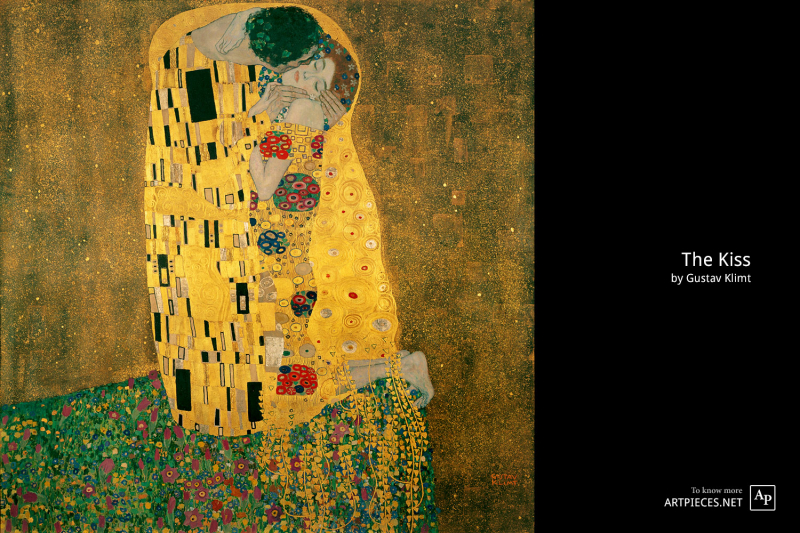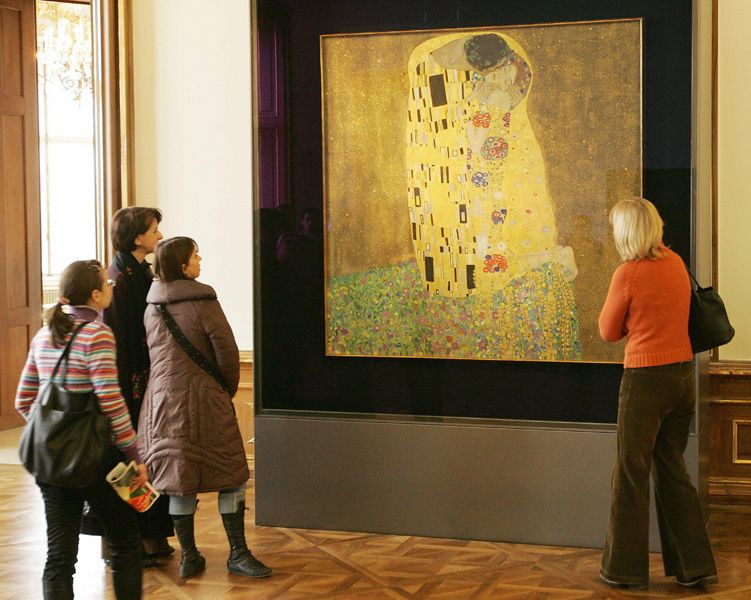Gustav Klimt, The Kiss
Gustav Klimt, an Austrian Symbolist painter, created The Kiss as an oil painting on canvas with additional gold, silver, and platinum leaf. It was created somewhere between 1907 and 1908, during the height of what experts refer to as his "Golden Period." As mentioned in the exhibition book, it was shown in 1908 under the title Liebespaar (the lovers).
The artwork shows a couple cuddling, their bodies entangled in complex, lovely robes embroidered in a manner influenced by both the previous Arts and Crafts movement's organic forms and the contemporary Art Nouveau style. The artwork, which is currently on display in the Austrian Gallery Belvedere museum in Belvedere, Vienna, is regarded as Klimt's most well-known works and a masterpiece of the Vienna Secession.
The Kiss, a depiction of intimacy by Gustav Klimt from the turn of the century that is lavishly gilded and lavishly patterned, combines Vienna Jugendstil, an Austrian take on Art Nouveau, with Symbolism. Klimt presents his subjects as mythological beings who have been modernized by lavish surfaces of contemporary graphic elements. The piece is a high point of the artist's Golden Phase, which spanned 1899 to 1910 and was characterized by the frequent use of gold leaf. This technique was motivated by a 1903 trip to Ravenna, Italy's Basilica di San Vitale, where he witnessed the church's renowned Byzantine mosaics.
Artist: Gustav Klimt
Created: 1907 - 1908

















